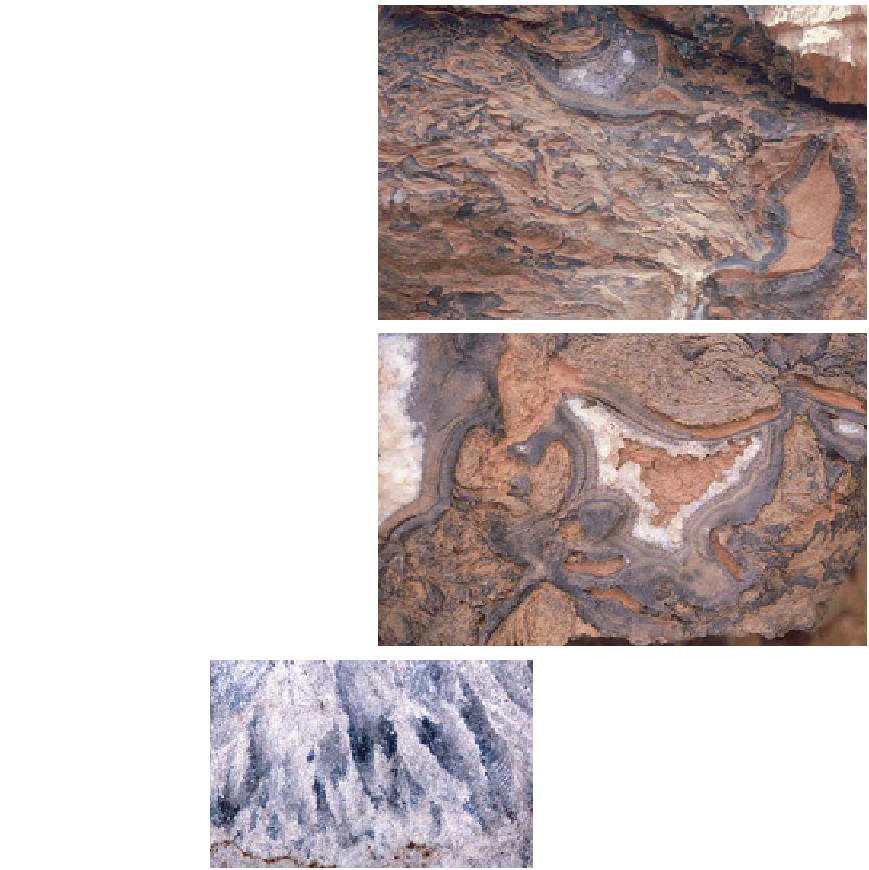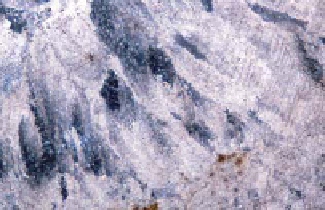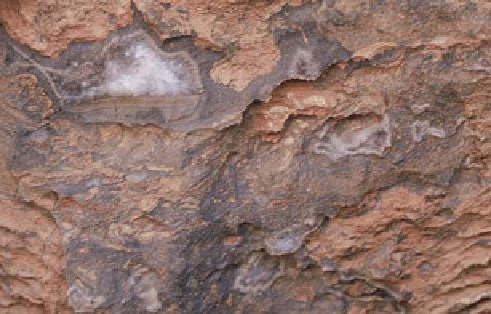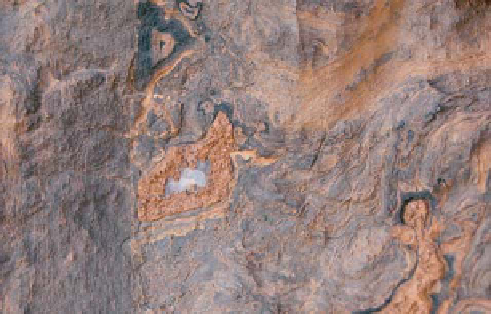Geology Reference
In-Depth Information
(a)
(b)
H
H
V
S
S
V
M
H
S
S
S
1 cm
1 cm
(c)
(d)
H
S
S
V
G
V
H
S
S
1 cm
1 cm
(e)
(f)
(g)
45º
25º
0º
Fig. 9.
Interstromatolitic material typical of
Conophyton
-
Jacutophyton
intervals. (a) Relationship between
Conophyton
(left of dotted line) and interstromatolitic material, including distorted stromatolitic debris (S), herring-
bone carbonate cement (H) and void-fi lling cement (V). (b) Void fi lls show several discrete generations of deposition.
The fi rst generation of cement always consists of marine herringbone carbonate cement; later generations include one
or more of the following: microsparitic crystal silt (M), blocky white spar, or ferroan dolomite cement. (c) The presence
of geopetal fi ll (G) implies that interstromatolitic void space remained open to fl uid and sediment transport even after
precipitation of marine herringbone cement. (d) Late-stage calcitic and dolomitic void fi lls imply signifi cant porosity of
interstromatolitic regions well after deposition and perhaps into burial environments. (e-g) The petrographic expression of
herringbone carbonate, which shows sweeping extinction along the crystal axis, results from a rotation of the
c
-axis during
crystal growth.
water energy and the position of storm and fair
weather wave-base.
On the scale of a single biostromal package
(interpreted to represent a third-order sequence),
sea-level history is fairly straightforward. The
base of each biostrome (R1-R3) is marked by
the presence of a thin, discontinuous interval
of branching columnar stromatolites, typically
of the form genus
Tilemsina
, whose irregularly
divergent branching, low synoptic relief, and
unwalled column structure indicate that accretion
of stromatolitic laminae kept pace with deposition
of hydrodynamically well-sorted, fi ne-grained
platy breccia. These thin, discontinuous, high-
energy beds are interpreted as transgressive
deposits. By contrast, the main body of the





















